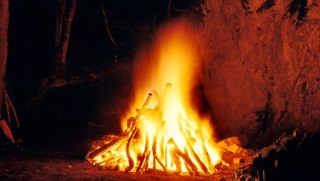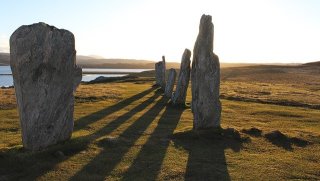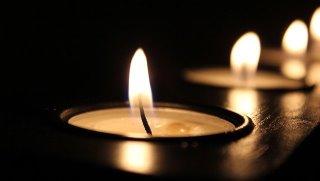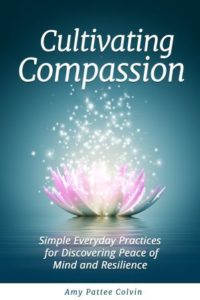The mid-winter solstice usually falls on December 21st. In the northern hemisphere, it is marked by the shortest day of the year and the longest night, representing the turning of the season.
Celtic Mid-Winter Solstice Traditions
Celtic traditions celebrated mid-winter for thousands of years before the advent of Christianity.
In winter, everything slows down, and plants become dormant. The energy of winter goes within. It is often a sacred time of reflection, rest and, new inspiration.
Celtic traditions celebrated mid-winter for thousands of years before the advent of Christianity.
In winter, everything slows down, and plants become dormant. The energy of winter goes within. It is often a sacred time of reflection, rest and, new inspiration.
As we consciously connect our awareness to nature’s cycles, we deepen our understanding of our own growth cycles. We consider what we value, who we are, and how we show up in the world. Then, as the days lengthen and awaken into spring, our best selves sprout up in the brighter days.
Thousands of years ago, Northern Europeans were hunters and gatherers. Many of them worshipped the sun. Well connected with the rhythms of nature and depending on their ability to monitor the seasons, they’d light bonfires at mid-winter solstice, and they’d tell drink ale, tell stories, make plans for the next summer season.
Pagan Customs
Druidic priests maintained the tradition of the yule log.
Ancient Celts believed the sun stood still for twelve days in the middle of winter. A log was lit during this time, and this long-burning fire was thought to conquer the darkness, banish evil spirits and bring luck for the coming year.
Much of our current mid-winter festive tradition originates with pagan solstice customs. One custom was hanging brightly colored decorations on a pine tree to symbolize various stellar objects—the sun, moon, and stars—all of which were deeply important to Celtic people. The current practice of gift-giving evolved from hanging gifts on trees as offerings to various goddesses and gods.
It was traditional to offer gifts with symbolic meaning. Fruit represented fertility, and candles represented bonfires.
Regardless of the origins of the rituals we practice this festive season, it seems that people attempt to celebrate in ways that connect them to the past.
Sacred Celtic Sites in Scotland
One center for pre-Christian worship during the solstice is Callanish on the Isle of Lewis, one of the sacred sites we’ll visit on the Scotland Spiritual Tour. In fact, we’ll visit Callanish during the summer solstice in 2026!
The standing stones date from around 3,000 years BC. Although academics still argue about their precise purpose, they unquestionably have a powerful energetic pull.
Maeshowe—another site we’ll visit—is a Neolithic chambered cairn and passage tomb on Orkney. It was built in the same era as Callanish, and its architecture clearly links it to the solstice tradition.
At mid-winter solstice, the last rays of the setting sun shine through Maeshowe’s entrance passage to pierce the darkness of the chambered cairn. At the darkest point of the year, this precise alignment permits light to shine into the central cavern and illuminate this spectacular tomb.
What was the purpose of this detailed design? Did the shaft of sunlight carry the souls of the dead into the light? Did the sun’s entry represent a fertility rite or rebirth? Or was it simply a way to acknowledge that the darkest time of year has come and gone, and the light was returning again?
Create Your Own Mid-Winter Solstice Tradition
Whether you celebrate with ancient traditions or new, mid-winter solstice is a time to come together with others to remember the past. And it is an opportunity to look within and connect with your best self. Try some of these ideas to tune in to your connection with the ancient past to help you move authentically into the new year.
Disconnect and Focus Inward
The darkness of mid-winter solstice naturally aligns with the energy of introspection. This is an ideal time to look inward and focus on what’s in your intuition and heart. Without regular self-check-ins, it becomes easy to get caught in the whirlwind of life, and we forget to reflect on whether or not we’re living our values. Mid-winter solstice is a wonderful time to have essential internal conversations, which help us correct course and grow.
Even if you choose not to do a formal ritual, honor this mid-winter energy by taking fifteen minutes—or more—and light a candle, leave your phone in a different room or turn off your notifications, turn on some relaxing music and spend quality quiet time with yourself. Compassionately take time to contemplate your life and how you show up in it, reflect on your past, and visualize what you desire for your future.
Hold a Candle Ritual to Set Intentions For the New Year
Ritually lighting a candle is the perfect way to honor the energy of the changing season. All you’ll need is a candle and a piece of paper on which to write your intentions. Close your eyes, sit with your breath, and let your intuition guide you. Set an intention for your new year from that quiet space, then write it on the paper. Fold the paper and place it under the candle—or near the candle if that is safer.
Throughout the year, each time you burn the candle, that intention, recorded on paper, will cast that energy into the universe.
Do a Mid-Winter Solstice Tarot Spread
If you have a deck of tarot cards, mid-winter solstice is a beautiful time to harmonize the energy of your introspection and intuition with the wisdom of the cards. A solstice tarot spread is an excellent way to gain insight and guidance into the year ahead. Relax into a peaceful and centered space and allow your inner wisdom to guide you as you shuffle the deck. Set the intention of uncovering wisdom for each month of the year ahead and pull twelve cards out and lay them face down in front of you—each represents an upcoming month of the year. Turn each card over and interpret the card’s meaning. Jot some notes or take a photo of the spread so you can reflect back on it over the year.
Get Together With People Who Bring You Joy
An essential part of celebrating the solstice has always been sharing love with the people closest to you—the ones who bring you joy. Thus many traditional winter celebrations involve gathering with loved ones and eating, drinking, and being merry! Honor the ancient history of this celestial event by creating a mid-winter solstice gathering with friends or family—even if you need to do it online.
It’s a fantastic opportunity to connect emotionally, share a nourishing meal, and light or candles or decorative lights to remind yourselves of the brighter spring days to come.









